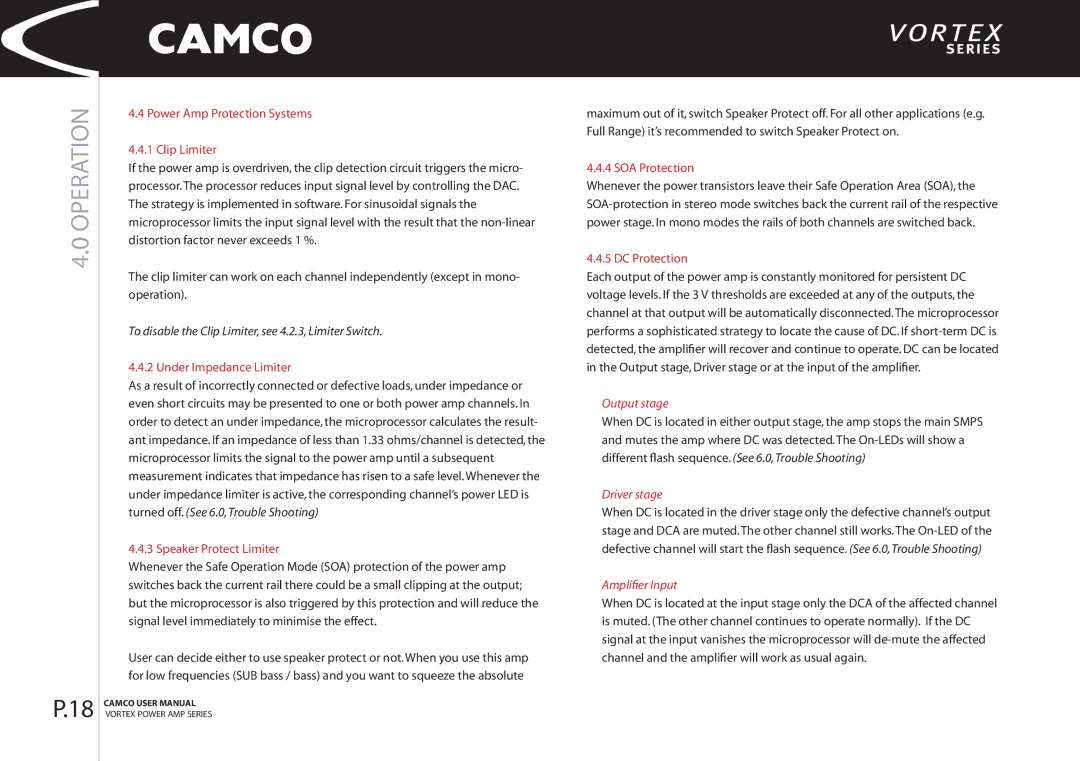
4.0 OPERATION
4.4 Power Amp Protection Systems
4.4.1 Clip Limiter
If the power amp is overdriven, the clip detection circuit triggers the micro- processor. The processor reduces input signal level by controlling the DAC. The strategy is implemented in software. For sinusoidal signals the microprocessor limits the input signal level with the result that the
The clip limiter can work on each channel independently (except in mono- operation).
To disable the Clip Limiter, see 4.2.3, Limiter Switch.
4.4.2 Under Impedance Limiter
As a result of incorrectly connected or defective loads, under impedance or even short circuits may be presented to one or both power amp channels. In order to detect an under impedance, the microprocessor calculates the result- ant impedance. If an impedance of less than 1.33 ohms/channel is detected, the microprocessor limits the signal to the power amp until a subsequent measurement indicates that impedance has risen to a safe level. Whenever the under impedance limiter is active, the corresponding channel’s power LED is turned off. (See 6.0,Trouble Shooting)
4.4.3 Speaker Protect Limiter
Whenever the Safe Operation Mode (SOA) protection of the power amp switches back the current rail there could be a small clipping at the output; but the microprocessor is also triggered by this protection and will reduce the signal level immediately to minimise the effect.
User can decide either to use speaker protect or not. When you use this amp for low frequencies (SUB bass / bass) and you want to squeeze the absolute
maximum out of it, switch Speaker Protect off. For all other applications (e.g. Full Range) it’s recommended to switch Speaker Protect on.
4.4.4 SOA Protection
Whenever the power transistors leave their Safe Operation Area (SOA), the
4.4.5 DC Protection
Each output of the power amp is constantly monitored for persistent DC voltage levels. If the 3 V thresholds are exceeded at any of the outputs, the channel at that output will be automatically disconnected. The microprocessor performs a sophisticated strategy to locate the cause of DC. If
Output stage
When DC is located in either output stage, the amp stops the main SMPS and mutes the amp where DC was detected. The
Driver stage
When DC is located in the driver stage only the defective channel’s output stage and DCA are muted. The other channel still works. The
Amplifier Input
When DC is located at the input stage only the DCA of the affected channel is muted. (The other channel continues to operate normally). If the DC signal at the input vanishes the microprocessor will
P.18 | CAMCO USER MANUAL |
VORTEX POWER AMP SERIES |
